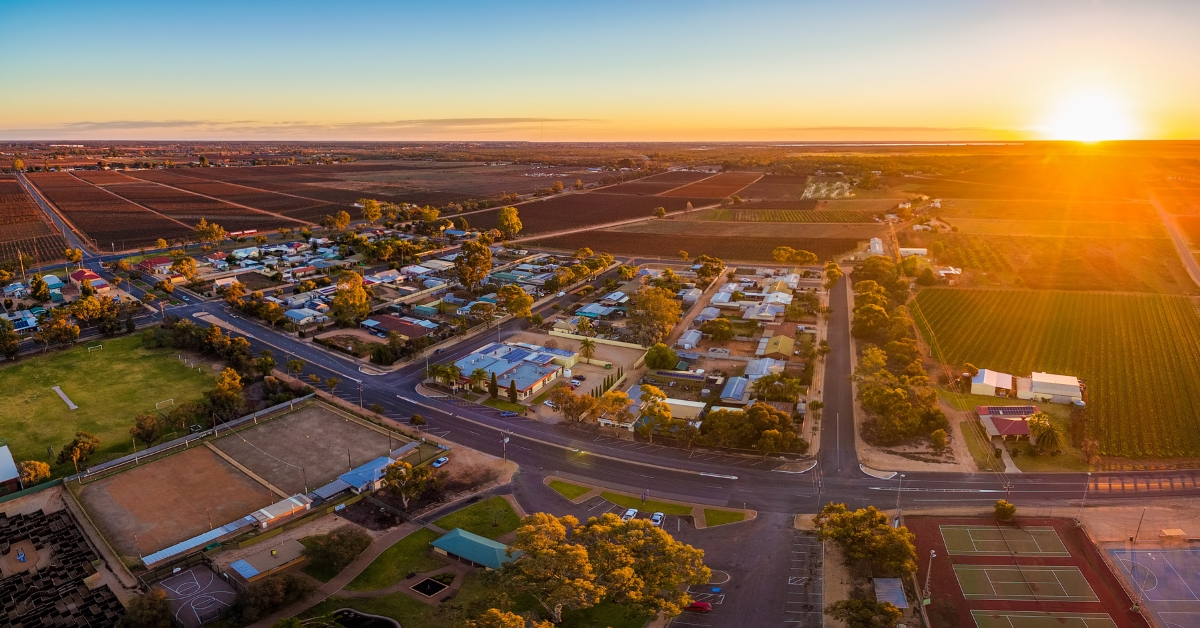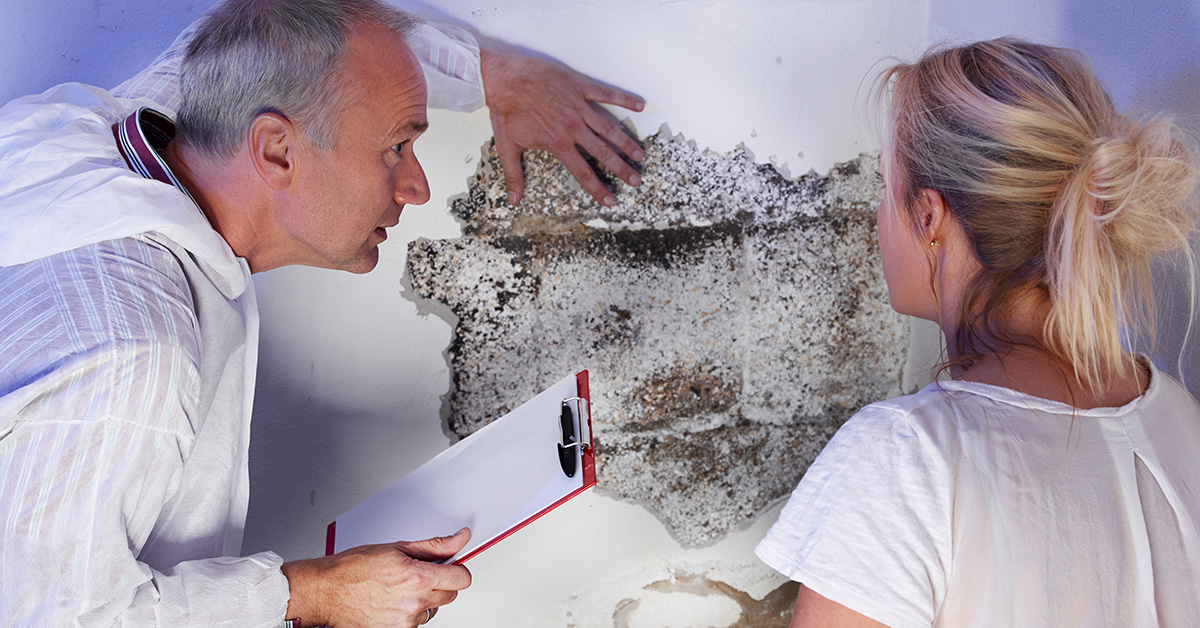Where to Buy Property in Australia: A Smart Investor’s Guide

Australians love property and investing in real estate has become one of the most popular ways to build wealth and create financial security. Beyond the potential for capital growth, building a property portfolio can deliver a steady rental income, improve cash flow and provide valuable tax advantages. Unlike the share market, which can fluctuate with the global market, real estate is considered a more reliable option – after all, housing will always be in demand.
However, buying a rental home isn’t something that can be done on a whim. Even seasoned experts need to weigh up the rewards and risks when working out where to buy an investment property in Australia.
So where do you begin? And how can you make sure the property you choose is going to prove to be a step towards achieving your financial goals?
Navigating the Australian investment property landscape
Housing supply remains constrained due to high construction costs, labour shortages and lengthy planning processes. At the same time, the nation’s rapidly growing population remains a key driver of housing demand. The Australian Bureau of Statistics projects population numbers could reach between 34.3 million and 45.9 million by 2071.
Major infrastructure projects across the country are also reshaping regions, including the Western Sydney Airport, Melbourne Metro upgrades, Brisbane Olympic Games preparation and Perth Airport expansion. These are all aimed at improving connectivity, creating jobs, and in turn driving demand for property.
Interest rate cuts commenced in early 2025 and are adding to the attractiveness of the property market, lifting both buyer and investor confidence. Nationally, home prices continue to increase, with solid gains seen in more affordable markets such as Darwin, Brisbane, Adelaide and Perth.
Tight rental conditions from late 2022 and 2023 have eased a touch, but the market remains very tight. As affordability ceilings bite, some renters are consolidating households or moving back with family and more are sharing. That has slowed the pace of rental growth, yet vacancy rates are still low and yields are holding up, keeping conditions favourable for investors.
All this may feel overwhelming, especially when figuring out the best places to invest in property. But with research and spending time looking for the right fundamentals, you will be able to work out the potential locations.
Benefits and risks of Australian property investment
It is possible to invest with little money, but you do need to be smart about how and where to spend it. For first-time buyers outpriced of their ideal market, rentvesting can present a clever way to start growing capital and get onto the property ladder.
It is essential to work out how long you are prepared to hold onto the property and establish an exit plan should the need to sell arise.
LJ Hooker Group’s Head of Research and Business Intelligence, Mathew Tiller, advises determining whether you are investing for capital growth or for yields.
“A lot of property is negatively geared, so you need to understand that your rent may not cover your expenses, which is more common than not,” he said.
“Choosing the right spot is important because you don’t want to be losing money on your rent and also not making money on price growth, even with the tax deductibility.”
An investment isn’t an emotional purchase, so don’t be swayed by your personal preferences for wall colour, kitchen style or whether it has a swimming pool. The right property should be one that can achieve your strategic goals.
For instance, if you are buying an investing in a property near a university, then an apartment is likely to be in demand more than a freestanding house. If you are buying in a lifestyle suburb, then look for a property that appeals to families.
“You need to make sure the property type fits the demographic demand in an area,” Mr Tiller said.
“It is about ticking boxes and finding a property that will meet the tenants’ needs rather than your own.”
An investment property is not an asset that you can set and forget. You need to be able to set aside money for regular maintenance and cover the rent during a period of vacancy. The income generated can also help to pay for strata fees, council fees and insurance.
The advantage of investing in real estate is that it creates a passive income, allowing wealth to be built over time. On top of that, there are plenty of tax benefits that can make property investment even more appealing.
Terms such as ‘negative gearing’ and ‘capital gains tax discount’ may seem complicated but it is important to understand how these may apply to you.
You might be surprised by some of the things landlords can claim. This includes advertising costs to find a tenant, land tax, council rates, strata fees, pest control, repairs and maintenance, garden maintenance, insurance, agent fees, stationery, phone calls and legal expenses.
Essential criteria for selecting a property location
Every investor wishes they owned a crystal ball showing areas that are most likely to enjoy healthy gains. While no one can predict the future with certainty, understanding key indicators can provide the confidence to move forward with a property.
Mr Tiller said it is important to do your research to gain proper insight into supply level, rental growth, population growth and buyer demand. This can be as easy as speaking with your local LJ Hooker agent or searching for information on local council or state Government websites, or even the Federal Budget.
“Typically, when trying to find opportunities, major cities often grab the headlines; however, this does not tell the whole story, as all markets behave differently, driven by unique local factors,” he said.
The first step in property investing is to set a clear budget. This will establish a boundary of where you can afford to buy. The good news is that the RBA’s latest rate cut has sparked competition between lenders, so be sure to shop around.
You may be tempted to think about where are the cheapest houses to buy in Australia, but this does not always make for a good strategy.
If your investment aim is to make capital growth, look for an area with short-term drivers such as strong population growth, low construction and dwelling stock. Ideally, somewhere where demand will exceed supply. When investing for yields, look for an area with a low vacancy rate.
“You need to make sure the economic fundamentals of a region are favourable to seeing price growth or limited vacancy,” he said.
“The most important step is doing your due diligence on a region and looking for key indicators such as whether an area has strong job prospects or incoming infrastructure and services.”
State-by-state breakdown: Potential investment location
Queensland (QLD)
Despite recent reports showing internal migration across Australia has fallen since 2006, Queensland remains an attractive location. The region offers a fabulous lifestyle and great weather, so it is little wonder why its population is continuing to grow, making it a hotspot for investors.
Brisbane
The upcoming 2032 Olympic Games will provide a significant boost for Brisbane with new infrastructure, expanded transport and urban renewal projects. It is seen as a desirable destination for investors looking for medium to long-term gains. The type of rental property that performs best in Brisbane depends on its location. Detached houses continue to deliver strong long-term returns, particularly in suburbs that appeal to families. Townhouses generally perform well in middle-ring suburbs where land is more limited, but convenience remains high.
Metro hotspots: Coorparoo, Springfield Lakes
Gold Coast
There is currently strong demand in the southern end of the region, driven by Brisbane and other local buyers looking for the ‘old Gold Coast’ feel. Suburbs such as Tugan and Bilinga are close to the beach but not suitable for high-rise development due to proximity to the airport are growing in popularity.
Regional Queensland
Affordability is also driving performance in regional pockets of Queensland, promising yields. Entry-level buying has been driving up prices, combined with a shortage of rental stock. Investor activity is picking up in suburbs around Toowoomba, which is an hour from the Brisbane CBD.
Regional hotspots: Toowoomba, Nambour
Victoria (VIC)
Investment properties, commercial sites, rental and holiday properties, all attract land tax in Victoria – even if they are vacant. Initially, this decision by the Victorian State Government resulted in many landlords selling off their portfolios. However, affordability and improving yields have seen many investors back to the market.
Melbourne
Melbourne has a consistent economy and population growth, and there is still demand for rental properties, plus improving yields. It remains an attractive destination for immigrants when arriving in Australia.
Metro hotspots: Werribee, Frankston
Regional VIC
Higher property taxes resulted in many investors leaving part of regional Victoria in 2024. The market began to attract more first-home buyers and owner-occupiers, which in turn led to a tighter rental market and lower vacancy rates. The region was also hit by a decision to cancel the 2026 Commonwealth Games, which impacted new planned infrastructure. Urban sprawl, attractive vacancy rates and affordability are seeing some markets start to pick up, creating opportunities for investors in towns with rail link accessibility to Melbourne.
Regional hotspots: Geelong, Ballarat
New South Wales
Investors and owner-occupiers upgrading to larger homes will dominate to take advantage of high listings and slower price growth. First-home buyers are active in outer metropolitan suburbs.
Sydney
As Australia’s most expensive market, investors need to be cashed up to afford a property in the metropolitan region. When considering where to buy a house in Sydney, consider upcoming infrastructure, such as the Metro expansion, which is creating new opportunities in the inner and middle ring suburbs. Property in the south-west corridor close to the future airport could potentially generate capital gains with the upcoming opening of Western Sydney Airport.
Metro hotspots: Mosman, Freshwater, Blacktown, Wattle Grove
Regional NSW
Look for towns with a strong economy and diverse industries providing a range of employment opportunities. This could be mining, education or tourism. Affordability and proximity to new transport upgrades can add to the appeal of a regional centre for investors.
Regional hotspots: Orange, Warrawong, Charlestown
South Australia
Owner-occupiers, investors and retirees are drawn to Adelaide’s affordability and lifestyle and should continue into 2025. Price growth is expected to moderate as listings pick up.
Metro hotspots: Hillcrest, Seacliff
Regional hotspots: Port Lincoln
Western Australia
Ongoing strong rental yields will continue to attract investors. There is an undersupply of new homes and listings, although solid economic activity will see price growth remain strong.
Metro hotspots: Innaloo
Regional hotspots: Busselton, Geraldton
Tasmania (TAS)
Market will hold steady and will see an uplift in activity once the impact of falling interest rates is felt by investors and buyers. Demand from retirees and lifestyle buyers seeking affordability in regional and coastal areas.
Metro hotspots: Kingston
Regional hotspots: Devonport, Launceston
Australian Capital Territory (ACT)
Ongoing demand from public sector employees and contractors. Looking forward, post-election confidence and potential rate cuts may bring investors back to the market.
Metro hotspots: Kambah, Wright, Amaroo
Northern Territory (NT)
Investors and first-home buyers are drawn by low entry prices. There are solid levels of investment in energy, mining and defence moving into the NT over the coming years. This will, in turn, see a more active property market as population and employment levels rise.
Metro hotspots: Parap, Zuccoli
Regional hotspots: Braitling
Where to buy: cities or regional markets?
While it is handy living in the same state as your investment property, you may find better value outside of metropolitan areas or even across the country.
When deciding between an urban or regional area, consider your goals, risk tolerance and long-term vision. Each has benefits and potential drawbacks.
For instance, an investment property in a capital city is likely to have demand, a wider pool of potential tenants and could be sold more quickly, if needed. However, you can expect to pay high entry costs and some market volatility.
If you are pondering where is the cheapest but nicest place to live in Australia, you may want to look at some still affordable coastal towns.
Purchasing an investment property in a regional area can be a great way to diversify your portfolio and is likely to have an attractive entry price point. While there is potential for higher long-term gains, it may be a struggle to find the right tenant in a smaller market if there is not a regular source of income.
Key takeaways
Be familiar with what makes a successful investment property, such as high demand, population, low vacancy rates and upcoming infrastructure such as new roads, metro lines or hospital upgrades.
Think about a strategy that will help to meet your financial goals. Do you want to hold onto the property for the short-term, or are you looking for long-term gains?
Shop around when speaking with lenders. Have an exit plan should you need to sell quickly. Put money aside, should your property have an extended vacancy period or urgent repairs.
If purchasing an apartment, be sure to read the strata report and look for red flags such as issues with cladding and drainage. Check that the building also has a substantial sinking fund.
Speak with an accountant so you can be positioned to maximise any tax benefits such as depreciation, capital gains, negative gearing and interest deductions.
Let LJ Hooker help you
Property investing is a great way to build wealth, but you need the right people behind you. This starts with talking to LJ Hooker sales agents in your target area. They will help identify the best investment property locations in Australia to buy in your price range and provide detailed market insights.
LJ Hooker has a team of experienced property managers who can help make sure you receive a reliable income stream, excellent capital growth and the best returns possible - as well as a guarantee of exceptional customer service. If you have an investment property, a rental appraisal will let you know if it is meeting the market price expectations and of any updates that could increase returns.
Talk to an LJ Hooker agent
DISCLAIMER - The information provided is for guidance and informational purposes only and does not replace independent business, legal and financial advice which we strongly recommend. Whilst the information is considered true and correct at the date of publication, changes in circumstances after the time of publication may impact the accuracy of the information provided. LJ Hooker will not accept responsibility or liability for any reliance on the blog information, including but not limited to, the accuracy, currency or completeness of any information or links.
Share


